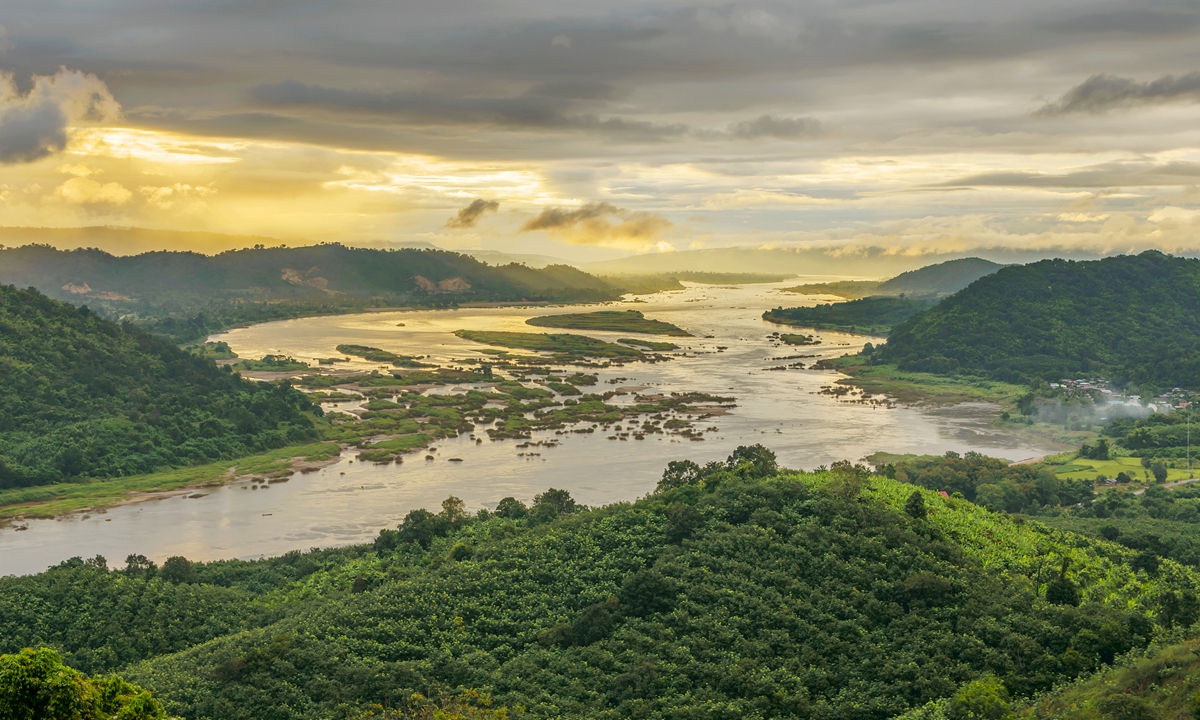US attempts to turn Mekong into another anti-China battlefield like S. China Sea
By Hu Yuwei Source: Global Times Published: 2020/9/15 20:48:40

A view of the Mekong River. Photo: VCG
With $150 million initial investment, the US claimed to launch a Mekong-US partnership as an integral part of its "Indo-Pacific vision," which observers believe shows its accelerated pace in politicizing the water resources issue in the region to curb China's growing influence in Southeast Asia.
US Secretary of State Mike Pompeo also accused the Communist Party of China (CPC) of "increasingly threatening the Mekong's natural environment and economic autonomy." Experts on Tuesday noted that Pompeo's remarks, with huge ideological overtones, show the US is trying to turn the Mekong River basin into a new battleground against China similar to the South China Sea.
The US launched a fierce narrative battle against China around the region in 2020. Working with US-backed NGOs, think tanks, lobbyists and media, the US hyped environmental and resources issues and sowed discord among the members by tarnishing China's efforts in the area.
A typical example is Pompeo's tweet on August 14 slandering China for "manipulating flows in a non-transparent manner," deliberately ignoring China's long-term pledge and efforts to share data with the countries involved.
For 18 years in a row, China has provided free hydrological data on the Lancang River, also known as the Mekong for southeast Asian nations, during the flood season, to assist Mekong River countries' flood control and disaster mitigation plans.
Global experts from the US, the UK, Lower Mekong Basin Region (LMRB) countries, and cross-national organizations at a virtual international seminar on July 14 agreed that cascade reservoirs along the Lancang River helped alleviate the drought downstream.
Some Western media claimed in 2019 that China's hydroelectric dams exacerbated the drought in other countries at the end of 2019.
But the Secretariat of the Mekong River Commission, an inter-governmental river basin organization, and Chinese hydraulic experts have cited scientific evidence, and concluded that the drought was mainly caused by reduced precipitation and the El Niño event.
"Many of those self-proclaimed US researchers did not even conduct field work in the Mekong basin before drawing their 'conclusions,'" Bi Shihong, a professor at the Center for China's Neighbor Diplomacy Studies and School of International Studies of Yunnan University, told the Global Times on Tuesday. "The reports of those institutions are less scientifically valuable, and member countries usually review the conclusions independently with more caution."
Pompeo on Monday again spread rumors in his statement, claiming that Chinese companies participating in construction projects in Mekong countries practice "predatory and opaque business." He blamed the CPC for a range of problems without providing evidence.
These allegations are clearly politically driven, exposing how the US is desperately looking for a new agenda to suppress China around the world, Bi said.
Prior to the Mekong-US partnership, the US proposed the Lower Mekong Initiative (LMI) in 2009 to pin more power in the Mekong sub-region. With the rapid development and smooth flow of the Lancang-Mekong Cooperation (LMC) mechanism initiated by China, the US escalated its stigmatization of China and has continued to offer multiple cooperation models to Mekong countries under "American-led Mekong water rules," said Zhang Li, an assistant professor on Water Diplomacy and the Mekong River region at Fudan University.
China is facing increasing pressure from beyond the Mekong River region, like smears from non-relevant countries that want to interfere in the region, Zhang told the Global Times. China can use the LMC mechanism to reap more tangible benefits for Mekong countries to promote regional stability and sustainable development, he said.